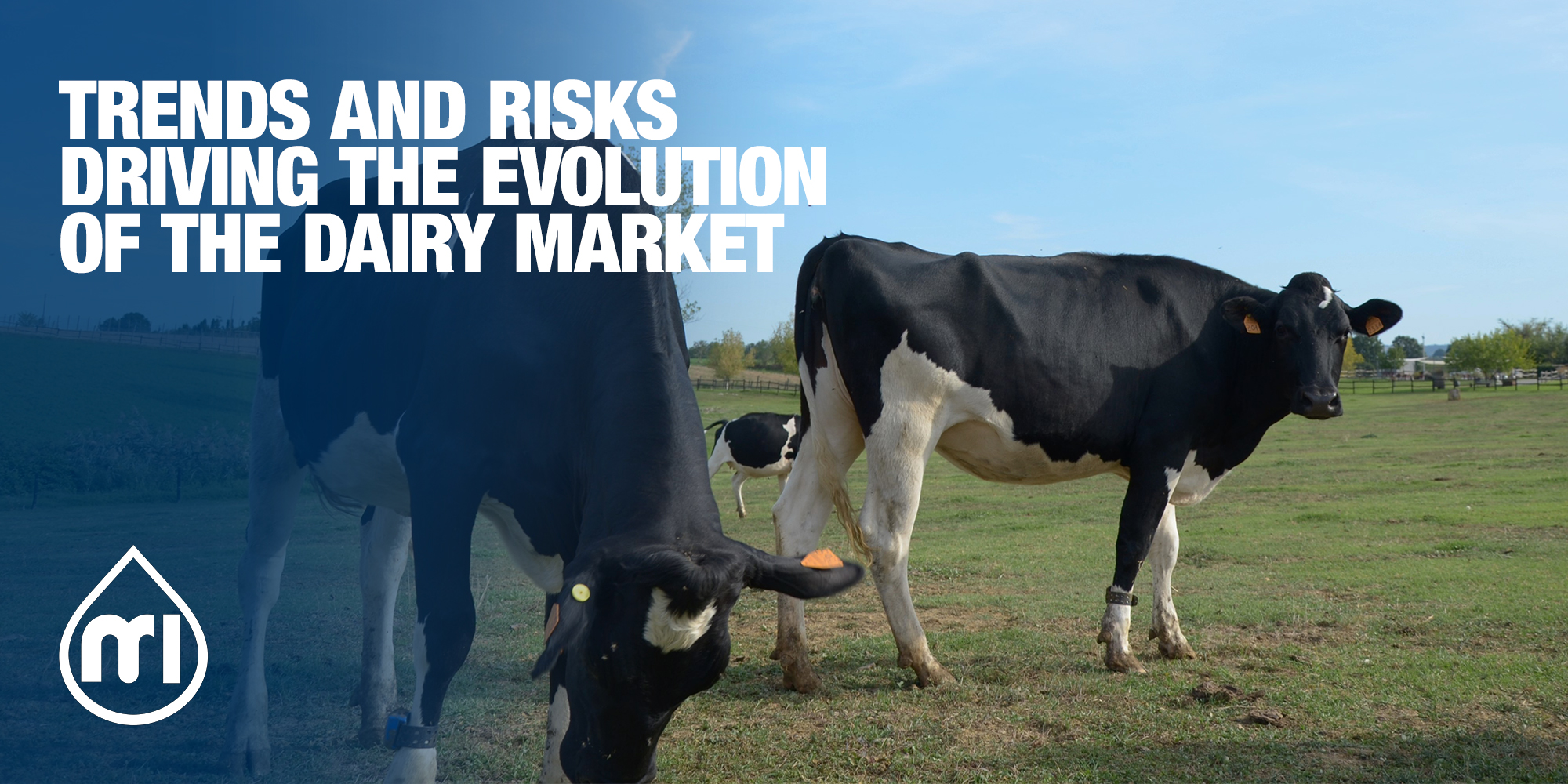
Trends and risks driving the evolution of the dairy market
An outlook on the main performance and drivers of the dairy market within the next 10 years.
Having acknowledged the current and future scenarios in terms of production, consumption, trade, and prices, it is time to investigate what factors will drive these trends and what aspects still remain unclear, with the potential to alter the situation.
The factors driving dairy demand and consumption
- Purchasing power is among the key drivers when it comes to choosing the milk product to consume. In fact, countries with higher incomes tend to have a higher demand for cheese or butter, which has a higher price compared to fresh dairy products, more common in low and lower-middle-income countries.
- Higher attention to health and wellness. More than ever, the world population is becoming health-conscious, looking for products that can supply essential nutritional benefits.
This is also linked to the increase in the demand for local, less processed products, with a supply chain as short as possible, as well as of “targeted products”, that meet specific dietary requirements, such as lactose-free or low-fat milk.
One more consequence stemming from this factor is choosing plant-based options. Nevertheless, are these really better than cow milk in terms of nutritional intake and health benefits? As we highlighted in our previous blog episode, thanks to its high protein, vitamin, and mineral intake, balanced consumption of cow milk plays a key part in reinforcing our immune system, intestinal barrier, teeth, and bones, protecting us from several types of cancer, stroke, type 2 diabetes, and it even guards us against cognitive decline, as highlighted by Kansas University’s Medical Center.
As the U. S. Food and Drug Administration also outlines, plant-based products do not have the same amount of nutrients unless artificially added. Moreover, it is essential to read the label before buying these products, as they may contain higher amounts of sugar while being devoid of essential nutrients.
- Sustainability, innovation, and technology. One more essential aspect that is increasingly being considered by consumers is the environmental impact. Consequently, striving to achieve efficiency while reducing GHG emissions through technology and precision farming remains a target for dairy farmers.
At the same time, technology helps to develop new, more “customized” dairy products, such as milk enriched with omega 3, as well as to extend the shelf life of products, reducing waste.
One more aspect linked to this factor is the increase in organic and grass-based dairy production systems, especially in Europe.
- On-the-go eating solutions. Higher incomes and urbanization are leading to a higher demand for food that can be conveniently eaten away from home from single-serve dairy products to food consumed in cafes, restaurants, and fast-food outlets.
The uncertainties affecting the dairy market
- Russia’s war against Ukraine. This event deeply affected agricultural supply and demand, leading to higher costs in raw materials and consequent global inflation.
From this scenario, a deeper interest in circular agriculture, with lower dependence on external inputs, might emerge.
- COVID-19. Policy measures and structural changes resulting from the pandemic might impact the economic recovery, lowering the GDP level. This might affect the dairy sector, as dairy consumption is closely related to income.
- Plant-based solutions. As mentioned above, the demand for plant-based alternatives is growing, especially in Europe, North America, and Asia, even though starting from a low base. Uncertainty regarding their environmental impact and health benefits, along with their long-term impact on the market currently remains unclear.
- Environmental policies and climate change. To curb the emissions of the dairy sector, strict environmental policies could be issued, affecting existing dairy production systems, while promoting technology and innovation. Alongside this, dairy farming could be threatened by extreme weather conditions, affecting its profitability in certain areas.
- Animal diseases. Mastitis is the most common yet dangerous disease for cattle, both in terms of consequences on the animal and on the farm’s profitability. Currently, treatment entails antimicrobials, which increases the risk of antimicrobial resistance. Future studies on this disease might lead to developing alternative remedies, as well as reducing losses.
- Changes in domestic policies and in trades. Both these factors could determine changes in demand and flow of goods within and outside each country.
In this article, we have outlined the current crucial trends that mark the dairy sector, affecting the demand and the trade of dairy products in the next decade. We have also defined the main risks that the dairy value chain should keep in mind, as they could potentially alter market performance, even with severe consequences.
Sources:
- 4 global trends driving dairy demand – Dairy Global, 2022
4 global trends driving dairy demand
- Can milk boost cognition? Birch – Kansas University Medical Center, 2023
- Dairy market trends for 2023 Hanson – edairynews, 2023
- Dairy’s role in supporting a healthy immune system – IDF, 2020
Dairy’s role in supporting a healthy immune system
- Milk, or a plant-based “milk”: what’s the nutritional difference? Morais – edairynews, 2023
Milk, or a plant-based “milk”: what’s the nutritional difference?
- Health benefits of dairy – IDF, 2019
- OECD-FAO Agricultural Outlook 2022-2031 OECD/FAO - OECD Publishing, Paris, 2022
OECD-FAO Agricultural Outlook 2022-2031
- What’s ahead for the dairy industry Adams, Maluf, Meilhac, Uchoa – McKinsey & Company, 2021
What’s ahead for the dairy industry
